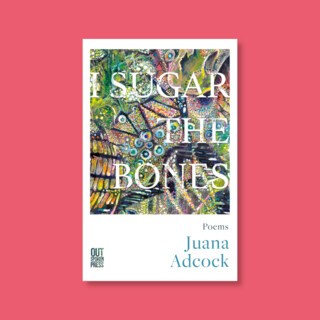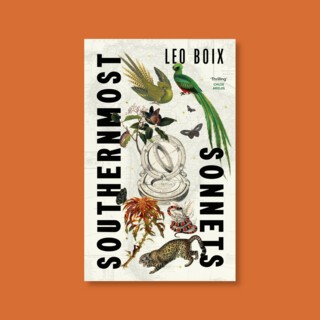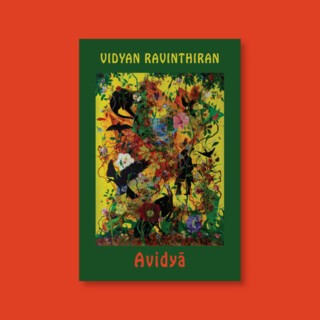Forward Prizes 2025 | Of Water and Walls: How I Wrote ‘I Sugar the Bones’
Posted by Juana Adcock

This Sunday, the winners of this year’s Forward Prizes will be revealed! In the run-up to the announcement, we’re exploring some of the books nominated in the Best Collection category. First up is Juana Adcock, describing how she wrote I Sugar the Bones, her fourth collection (and first to be published by Out-Spoken Press).
I’ve been thinking a lot about rivers. How they travel, and how we move alongside them. Many years ago, in Mexico, I overheard a woman speaking of a recent flood: porque el agua ya sabe para dónde (because water already knows where to go). The phrase has rattled about at the back of my mind ever since. The idea that water has knowledge, and a knowledge that precedes and supersedes our human knowledge, opened up many intriguing questions. Once a dam is removed, or broken, a river will always return to its original path. In that sense, a river is a perfect memory of what has always been, regardless of our human efforts to redirect or contain it.
I grew up near a river, the Santa Catarina, that runs dry most of the year, except occasionally, during the rainy season, when the tail end of the Gulf of Mexico hurricanes will whip and lash against the towering mountains that surround my city of Monterrey like a fort. Like many urban rivers, the Santa Catarina cuts the city in half and determines much of the traffic flow. Two of the main arteries of the city, Constitución and Morones Prieto, run at either side of it, eventually turning into the motorway leading out of the city. Many efforts have been made over the years to utilise the vast expanse of the dry riverbed for something useful, the Puente del Papa flea market being my favourite. Fun fairs, football pitches, cycle lanes have also transformed the river with its sometimes lush, almost jungle-like riverbed vegetation into something functional. The problem is that roughly every 20 or 30 years a hurricane will make it past the mountains guarding the city, and will cause the river to overflow with a vengeance, destroying everything in its path. In my lifetime I have seen this happen twice: with Hurricanes Gilberto in 1988 and Alex in 2010, the Santa Catarina became a terrifying body water full of jagged waves tearing through the city like a dragon with myriad fins. This river exists on a cycle all her own – one that humans are wont to forget.
The Santa Catarina is also a tributary to the Rio Bravo, which is called the Rio Grande by our English-speaking counterparts, and which marks the border between Mexico and the United States. The slur ‘wetbacks’ for Mexican immigrants refers to the possibility of fording the border by simply swimming or even wading across it, when its waters are low and tranquil. I crossed this river many times. If the family ever went on a weekend trip, it would be to McAllen or Laredo, Texas, because where else was there to go? I hated these trips. It meant waking up at 5 am, queueing for hours on the bridge at the border, being harshly interrogated by the Border Patrol agents whose main life purpose, it seemed, was to intimidate and make people nervous. The food in Texas made me ill and the water tasted like septic tank chemicals, even the Coke. Even as a child, I figured out that America’s favourite food ingredient, high-fructose corn syrup, triggered my migraines and was clearly poison. Overall, the US seemed like a very sad, sick and decadent place. The morbidly obese people with their 2-liter take away cups filled with ice and Coke; the wide, too-clean, treeless avenues; the endless malls and outlets and fast-food restaurants – all objects of desire that, as a member of this strange society, I was supposed to want. The land was flat as a pancake in every sense, aside from the spaghetti junctions that rose above us with smug futurism. The nicest part about the place was the Spanish language spoken behind most of the shop counters, alive and kicking. ‘We didn’t cross the border, the border crossed us,’ is what many Mexican families say, their roots in the land running deeper than the idea of the nation-state, or President Santa Anna’s ability, in the 1850s, to sell a third of Mexico to the then-tiny US.
This book started with a trip I made to the opposite end of the border, at Tijuana. I was determined to find the place where Mexico stops and the US starts. I saw the US-Mexico border wall, absurd in its towering reinforced concrete and double layers of meshing and razor wire, and how all of these mighty objects formed a rhythm that petered out into the sea. I stood on the sand, very close to the wall, the waves lapping at my shins. One could very easily swim around it: there is no hard border dividing the ocean waves. I thought of the opening lines of Ursula Le Guin’s The Dispossed, about a wall that ‘degenerated into mere geometry, a line, an idea of boundary’. But then my reverie was broken when I looked up and saw a soldier on the American side, his M-16 assault rifle at the ready. Was he pointing at me? Would he be prepared to shoot at seagulls too, or just at children playing on Mexican soil? I glanced back at our side of the wall, all dressed up in beautiful colours: the murals painted spoke about dreams and self-improvement, determination and joy. There was even a poem by Hubert Matiuwaa, a poet I was translating, graffitied in ornate lettering and beautiful vines: crecerá nuestra lengua: ‘our language will grow’. There was banda music blaring from different directions, people dancing on the beach, street vendors selling roast corn and helium balloons, all of the lively atmosphere of any popular Mexican seaside spot, mixed in with the nostalgia and in-between feeling of being about to embark – if odds would allow – on a big journey one might never return from; the pre-emptive pain of separation from loved ones; the leaving behind of everything one has known and loved and been defined by, in search of a way to survive. The US side, by contrast, felt thoroughly disinfected, deserted and, well, boring. It seemed even the seagulls preferred the Mexican side. Who in their right mind would go to the so-called ‘land of the free’? The ‘golden cage’, as Los Tigres del Norte call it: ‘Even if the cage is made of gold, it is still a prison’. I theorised that only those escaping hunger and (US-inflicted) war would leave their home behind. Then I queued to cross the border into San Diego on foot, and spoke to people, and I realised the line was not that simple. It was business people and truck drivers and commerce and labour and merchandise, and myriad things flowing in and out like a circuit of arteries and veins. Both sides as essential to each other as salt to the sea.
Was the wall then just for show? I thought about what the wall was made of, the actual materials it was built of, and not just the physical – the confluence of narratives, politics, economies, psychologies and histories that conspired to build this wall. I found it unsettling that this wall looked remarkably similar, in shape, form and attitude, to the wall between Jerusalem and Bethlehem, where, by a strange accident of fate, I lived for three months prior to this trip. As my friend drove me eastwards alongside the wall in Baja, I watched it snake between the hills, sometimes turning into a rusty fence, on and on along the tenth longest border in the world. The landscape and vegetation were unexpectedly Mediterranean and not dissimilar to Palestine. What else was similar, aside from the wall, and the children shot? Not the genocide, but perhaps some of the ideas and alliances underlying it. I thought of my own border crossings, material and immaterial, external and internal. This book inevitably flows out of these reflections.
Juana Adcock is the author of I Sugar the Bones, published by Out-Spoken Press. See all the books on the Forward Prize shortlists here.





